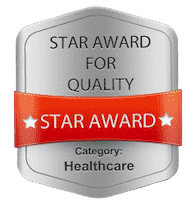Celiac Disease, a prevalent autoimmune disorder, impacts approximately one in every 100 individuals worldwide. It triggers a severe immune response when foods containing gluten—a protein found in wheat, barley, and rye—are consumed. This immune response damages the small intestine’s lining and can lead to a slew of health issues, ranging from digestive problems to neurological complications.
Call +91 8080850950 to schedule an appointment to discuss your gastric related issues and our CUREplus Homeopathy treatment of Celiac Disease.
Treatment of Celiac disease with tailor-made Welling Homeopathy medicines can help faster recovery from symptoms and permanent cure from celiac disease.

The complexity of Celiac Disease lies in its wide array of symptoms, making it challenging to diagnose. Symptoms may vary greatly among different people, including diarrhea, abdominal pain, fatigue, weight loss, and even depression. However, once diagnosed, managing Celiac Disease becomes a lifelong obligation.
Diet plays a pivotal role in this management process. In fact, the only existing treatment for Celiac Disease is a strict gluten-free diet. The omission of gluten from the diet allows the small intestine to heal, alleviates symptoms, and reduces the risk of developing associated complications, such as osteoporosis, infertility, nerve damage, and seizures.
This guide aims to provide an in-depth exploration of Celiac Disease, focusing on the crucial role of diet in managing it effectively. We will delve into the various foods individuals with Celiac Disease should avoid and offer practical tips for transitioning to a gluten-free lifestyle. Accordingly, whether you are newly diagnosed or looking to improve your gluten-free diet, this comprehensive guide caters to your needs.
Understanding Celiac Disease
Celiac Disease is a chronic autoimmune disorder that primarily targets the small intestine. It is triggered when the body mistakenly identifies gluten—a protein primarily found in wheat, barley, and rye—as a threat. Consequently, it mounts an immune response that inadvertently harms the small intestine’s lining, specifically the fingerlike projections known as villi. This damage prevents the proper absorption of nutrients from food and can eventually cause an array of health issues, such as malnutrition, osteoporosis, anemia, and even neurological complications.
The exact cause of Celiac Disease remains unknown, but it is generally accepted that the combination of genetic predisposition and environmental factors plays a significant role. Individuals with a close family member diagnosed with Celiac Disease have a higher chance of developing the condition in comparison to those with no family history.
Symptoms and Diagnoses of Celiac Disease
The symptoms of Celiac Disease can vary significantly among individuals, which is one of the primary reasons that makes it challenging to diagnose. Some people may experience severe gastrointestinal symptoms, while others may have only minor discomfort or even no noticeable symptoms. Common symptoms of Celiac Disease include:
- Diarrhea
- Abdominal pain or bloating
- Weight loss or reduced appetite
- Nausea
- Fatigue
- Joint pain
- Anemia (iron deficiency)
- Headaches or migraines
- Skin rashes (such as dermatitis herpetiformis)
- Numbness and tingling in the hands and feet (neuropathy)
- Depression or anxiety
Additionally, children with Celiac Disease may exhibit growth problems, such as delayed puberty, short stature, or failure to thrive.
The process of diagnosing Celiac Disease usually involves several steps:
- Medical history and physical examination: The doctor will inquire about your symptoms, family history, and personal medical history, which may reveal potential clues pointing toward Celiac Disease.
- Blood tests: Your doctor may request specific blood tests to check for antibodies that are commonly elevated in individuals with Celiac Disease. These tests are often the first step in diagnosing the disorder.
- Intestinal biopsy: If blood tests reveal the possibility of Celiac Disease, your doctor may suggest an endoscopic biopsy. A small tube with a camera (an endoscope) is inserted through the mouth into the small intestine, and a tiny sample of the intestinal lining is taken for analysis. This test helps confirm the diagnosis by revealing any damage to the villi.
- Response to a gluten-free diet: If a positive diagnosis is established through blood tests and biopsy, the patient will be asked to follow a strict gluten-free diet. The improvement of symptoms on a gluten-free diet serves as further confirmation of Celiac Disease.
Overall, understanding Celiac Disease and its various symptoms is crucial for those affected by it, as well as their families, caregivers, and medical professionals. Early diagnosis and adherence to a strict gluten-free diet can help to alleviate the symptoms, promote the healing of the small intestine, and minimize the risk of potential complications.
Gluten and Its Impact
What is Gluten?
Gluten is a protein composite primarily found in grains such as wheat, barley, and rye. It’s essentially what gives dough its elastic shape, allowing it to stretch and rise during baking. It consists of two main proteins: gliadin and glutenin. They both play different roles—gliadin makes the bread rise, giving it a soft texture, while glutenin provides elasticity and maintains the shape of the bread.
How does Gluten Affect Those with Celiac Disease?
In individuals with Celiac Disease, ingestion of gluten triggers an abnormal immune response. This immune response is, in essence, your body attempting to protect itself against what it perceives as a harmful invader. For those with Celiac Disease, gluten is this “perceived invader.”
The body’s response to the “gluten invasion” causes inflammation and damage in the small intestine. Specifically, the villi, tiny finger-like projections lining the small intestine that absorb nutrients, are destroyed. Absorption of nutrients then becomes exceedingly difficult, which can lead to malnutrition.
Gluten’s impact is not limited to the digestive system. Several non-digestive symptoms can occur, including dermatitis herpetiformis, a severe itchy, blistering rash that is caused due to gluten-driven inflammation. In many cases, severe and persisting fatigue, joint pain, and neurological symptoms like depression, anxiety, and even seizures can occur due to poor nutrient absorption.
Importantly, gluten does not affect everyone in the same way. Some individuals may experience severe symptoms almost immediately after consuming gluten, while others may have less severe symptoms or experience them after a delay. Some people may also have silent or asymptomatic Celiac Disease in which damage occurs in the small intestine but without notable symptoms. Regardless, the common key to managing Celiac Disease is maintaining a strict, lifelong commitment to a gluten-free diet.
In future sections of this guide, we will explore the complexities of a gluten-free diet, detailing which foods to avoid, and how to optimise health and nutrition while living without gluten.
Common Foods Containing Gluten
Gluten is present in a multitude of foods, often in some that might not be obvious at first glance. Notably, it is often found as an ingredient in many processed and packaged foods. Here’s a list and explanation of common gluten-containing foods:
1. Wheat-Based Foods
All forms of wheat contain gluten, including durum, spelt, bulgur, einkorn, farina, emmer, semolina, and wheat berries. Consequently, most wheat-based products such as breads, cakes, biscuits, pancakes, pastries, pasta, cereals, and wheat-based flours are off-limits for those with Celiac Disease.
2. Barley and Rye
Similar to wheat, barley and rye are also grains that contain gluten. They are often used in the production of bread, beer, malted products, and certain types of cereals.
3. Baked Goods and Desserts
Most commercially produced baked goods such as cookies, donuts, pies, muffins, cupcakes, and even some ice-creams contain gluten due to the usage of standard flour.
4. Cereals and Granola
Most mainstream cereals contain gluten, whether from the grains used, malt flavorings, or additives. Always check the label and opt for cereals clearly marked “gluten-free.”
5. Pasta and Crackers
Traditional pasta, whether made from wheat, rye, or barley, contains gluten. Similar rules apply to most types of crackers.
6. Processed Meats
Surprisingly, many processed meats, including sausages, hot dogs, cold cuts, and pre-packaged deli meats, may contain gluten as fillers or binding agents.
7. Sauces, Soups, and Dressings
Many sauces, soups, and dressings can contain gluten, whether used as a thickening agent or as part of flavoring additives. Products like soy sauce, marinades, gravies, and salad dressings often contain gluten unless expressly stated otherwise.
8. Beer and Malt Beverages
These typically contain gluten due to the barley used in the fermentation process.
9. Snack Foods
Many snack foods like pretzels, chips, popcorn, and rice cakes, may contain gluten.
The key to avoiding gluten is vigilant label-reading. Many products may now carry a “gluten-free” label, but it’s crucial to read the ingredients list. Look out for hidden sources of gluten such as brewer’s yeast, modified food starch, and malt flavoring. With time, identifying gluten-containing foods becomes much more manageable and becomes almost second nature.
A Comprehensive List of Foods to Avoid in Celiac Disease
Managing Celiac Disease primarily involves avoiding all foods that contain gluten. Below is an extensive list of foods that individuals with Celiac Disease should avoid:
Grains and Starches
- Wheat in all forms – including whole wheat, wheat bran, wheat germ, wheat starch, and others such as durum, einkorn, emmer, kamut, graham, farina, and semolina.
- Rye
- Barley
- Triticale (a cross between wheat and rye)
- Bulgur
- Farro
- Seitan (a wheat protein often used in meat substitutes)
- Spelt
Baked Goods and Cereals
- Cakes and pastries
- Biscuits and cookies
- Doughnuts
- Crackers
- Waffles and pancakes
- Most cereals
- Bread, unless it’s labeled gluten-free
Pasta and Related Products
- Noodles made from wheat flour
- Traditional pasta made from wheat
- Couscous
Processed Foods
- Processed meats like sausages, hot dogs, and certain deli meats
- Soy sauce (traditionally fermented from wheat, though gluten-free versions are available)
- Gravies and sauces (often thickened with wheat flour)
- Salad dressings (may contain malt vinegar, soy sauce, or wheat)
Beverages
- Beer, ale, and lagers
- Malted milk drinks
- Any other malt beverages or products
- Non-distilled alcoholic beverages and vinegar (distillation removes gluten)
Prepackaged and Prepared Foods
- Pre-made soups (may contain roux made from wheat flour)
- Pre-packaged meals (may contain wheat-based ingredients)
- Ice cream (some brands may contain gluten)
- Potato chips (certain flavors may have gluten-containing additives)
Miscellaneous
- Malt, including malt syrup, malt extract, malt flavoring, and malt vinegar
- Any food that uses wheat-based or gluten-containing additives
Reading labels is paramount when it comes to avoiding these foods, as even trace amounts of gluten can cause damage to the intestines of individuals with Celiac Disease. While this list may seem exhaustive, it’s important to note that there are plenty of healthy, delicious, gluten-free alternatives available, and a wide variety of foods that are naturally gluten-free. A balanced and varied gluten-free diet can ensure nutritional adequacy while enabling individuals with Celiac Disease to avoid symptoms and maintain good health.
Transitioning to a Gluten-Free Diet
Making the switch to a gluten-free diet can feel overwhelming at first. However, with a bit of patience and planning, the transition becomes manageable and even enjoyable. The following practical tips can help you gradually remove gluten from your diet and maintain a healthy, delicious lifestyle:
1. Learn the Basics
Educate yourself about gluten-containing grains, common hidden sources, and how gluten additives are used in processed foods. Familiarize yourself with label-reading and be aware that not all manufacturers follow the same gluten-free labeling standards. Look for certified gluten-free labels to be confident in your choices.
2. Get Organized
Streamline your pantry and kitchen to make them gluten-free friendly. Remove gluten-containing foods and replace them with gluten-free alternatives. Keep separate cutting boards, toasters, and utensils for gluten-free use to avoid cross-contamination. Familiarize yourself with gluten-free grains such as quinoa, rice, amaranth, millet, and sorghum to diversify your options.
3. Master Gluten-Free Alternatives
Explore gluten-free alternatives for staple foods, like bread, pasta, and baked goods. Many supermarkets offer gluten-free sections with a variety of options or look for specialty gluten-free products from dedicated gluten-free brands. Additionally, learn to cook and bake with gluten-free flours likes almond flour, coconut flour, rice flour, corn flour, or a pre-mixed all-purpose gluten-free flour blend.
4. Embrace Whole, Naturally Gluten-Free Foods
Focus on whole foods and natural ingredients that are inherently gluten-free. A well-rounded diet with a variety of vegetables, fruits, lean proteins, dairy (if tolerated), and gluten-free grains as your foundation can provide excellent nutrition without the risk of gluten exposure.
5. Plan Meals and Snacks
Take the time to plan gluten-free meals and snacks to avoid scurrying for food options in a pinch. Meal prepping, batch cooking, and maintaining a list of go-to gluten-free recipes can simplify your life and minimize the risk of accidental gluten consumption.
6. Dining Out Mindfully
When eating out, communicate your dietary needs to your server. Look for restaurants with dedicated gluten-free menus or a willingness to accommodate dietary restrictions. Be cautious with foods that may be at risk for cross-contamination, like shared fryers or pre-made dishes.
7. Build a Support Network
Join local or online support groups, and connect with others who have Celiac Disease or follow a gluten-free diet. Share experiences, recipes, and tips to remain motivated and encouraged in your gluten-free journey.
8. Be Patient
The transition to a gluten-free diet is a process. It takes time, effort, and dedication to become familiar with all the nuances and options. Allow yourself the opportunity to learn and gradually adapt to this new way of eating. Don’t be too harsh on yourself if you make mistakes—keep moving forward, and soon, managing a gluten-free diet will become second nature.
Gluten-Free Alternatives
There are many naturally gluten-free foods and specially designed products to replace those that usually contain gluten. Here’s a list of gluten-free alternatives that are safe to consume for individuals with Celiac Disease or gluten sensitivities:
Grains and Starches
- Rice – brown, white, or wild rice
- Quinoa
- Millet
- Amaranth
- Buckwheat (not related to wheat)
- Teff
- Sorghum
- Corn (including cornmeal and polenta)
- Tapioca
- Arrowroot
- Oats (ensure they are labeled gluten-free, as cross-contamination may occur during processing)
Bread, Pasta, and Baked Goods
- Gluten-free bread made from rice, tapioca, potato, or other gluten-free flours
- Gluten-free pasta made from rice, corn, quinoa, or legume-based flours
- Gluten-free baked goods like muffins, cakes, or cookies made with alternative flours (e.g., almond, coconut, rice, or a pre-mixed all-purpose gluten-free flour blend)
Gluten-Free Flours
- Almond flour
- Coconut flour
- Rice flour (brown or white)
- Sorghum flour
- Buckwheat flour
- Chickpea (garbanzo bean) flour
- Potato flour or starch
- Cornflour or cornstarch
- Tapioca flour or starch
- Pre-mixed all-purpose gluten-free flour blends
Snacks
- Gluten-free crackers and crispbreads
- Rice cakes or corn cakes
- Gluten-free pretzels
- Popcorn (check labels for additives)
- Tortilla chips made from corn or other gluten-free grains
Condiments and Sauces
- Tamari sauce (a gluten-free soy sauce alternative)
- Coconut aminos (similar to soy sauce, but soy and gluten-free)
- Gluten-free mustard, ketchup, hot sauce, and other condiments
- Gluten-free salad dressings (double-check labels for hidden sources of gluten)
- Gluten-free marinades and sauces
Processed Foods
- Gluten-free certified deli meats and sausages
- Gluten-free frozen meals, pizzas, and specialty products
- Gluten-free convenient snack bars
Alcohol
- Wine
- Spirits and distilled alcohols (e.g., vodka, gin, rum, and tequila)
- Gluten-free beer (crafted from gluten-free grains like sorghum, rice, or millet)
Remember to read labels carefully and monitor for any gluten-containing additives or potential cross-contamination risks. With diligent examination and mindful substitutions, you can safely and comfortably maintain a gluten-free diet without sacrificing taste or variety.
Living with Celiac Disease
Living with Celiac Disease means embracing a lifelong gluten-free diet. This can be tough at first, but many individuals adjust over time and lead healthy, happy lives with this new dietary regimen. Here are some insights and practical tips for managing life with Celiac Disease:
1. Education
Educate yourself about the disease, its implications, and measures that need to be taken to safeguard your health. Understand the importance of adhering strictly to a gluten-free diet and learn to identify hidden sources of gluten in processed foods, medicines, and even cosmetics.
2. Embrace Your Diet
Feeling deprived of your favorite foods can be difficult. However, with the broad range of gluten-free products available and an array of naturally gluten-free foods, embracing a gluten-free diet can be a journey of culinary discovery. Experiment with new recipes and enjoy exploring delicious, wholesome alternatives that cater to your dietary needs.
3. Meal Planning and Preparation
Take control of your food by prioritizing home-cooked meals. Planning meals and snacks ahead of time helps to avoid last-minute pitfalls. Batch cooking and freezing portions for later use can be a real lifesaver and provide peace of mind knowing that your meals are safe.
4. Dining Out
Eating out can be challenging. Research restaurants in advance and call ahead to ensure they can cater to your dietary needs. Use mobile apps and online reviews to find gluten-free-friendly eateries and always communicate your needs clearly to the serving staff.
5. Cross-contamination
Cross-contamination of gluten-free foods with gluten-containing foods is a common problem. To avoid this, have separate utensils, toasters, containers, and prep areas in your kitchen for gluten-free foods.
6. Support Network
Join social networking groups or local support groups for individuals living with Celiac Disease. Shared experiences, tips, and support from others who understand your struggles can be incredibly comforting and helpful.
7. Regular Check-ups
Maintain regular doctor appointments to keep a track on your health. Doctors can provide consultations, perform regular screenings, and provide guidance to help manage living with Celiac Disease.
8. Self-Care
Practice self-care and manage stress levels. Regular exercise, mindfulness practices, and ensuring adequate rest is important for overall well-being and can help manage symptoms of Celiac Disease.
Living with Celiac Disease is not just about managing your diet, but also about adjusting your lifestyle to accommodate your health requirements. With time, vigilance, and a positive perspective, managing Celiac Disease becomes a part of your routine and you will be able to lead a healthy, fulfilling life.



